Over the last few weeks, the judges in the Grass10 Grassland Farmer of the Year competition have been hitting the roads and visiting farms around Ireland.
The competition is open to grassland farmers in all sectors, with specific category winners in dairy, beef and sheep, along with a young farmer category and a heavy soils category – recognising that land type is a major constraint to growing high quantities of grass.
Shortlist
The applications are whittled down by Teagasc personnel and a judging shortlist is created, well before any farm is visited.
This desktop exercise looks at grass growth, number of grazings per paddock, number of times the farm was measured and the average pre-grazing yield across multiple years.
This means that only the top farmers in each category are visited, so effectively they are winners already.
Questions
When the judges get on the farm, the farmer is questioned in more depth about his or her system, how they manage grass at various times of the year, their use of inputs such as meal and fertiliser, soil fertility, grazing infrastructure and their approach to managing biodiversity.
The judges will pick a category winner and an overall winner. Previous overall winners are Eddie O’Donnell from Tipperary in 2017 and John MacNamara from Limerick in 2018.
Fermoy, Co Cork
Mike and Tina Bermingham are in their sixth year of milking cows. Their north-facing farm outside Fermoy in Co Cork is overlooking the Blackwater Valley and some of the best land in the country. However, the Bermingham farm is high and exposed; it starts at 500ft above sea level and the top of the farm is at 600ft above sea level. Above that is forestry.
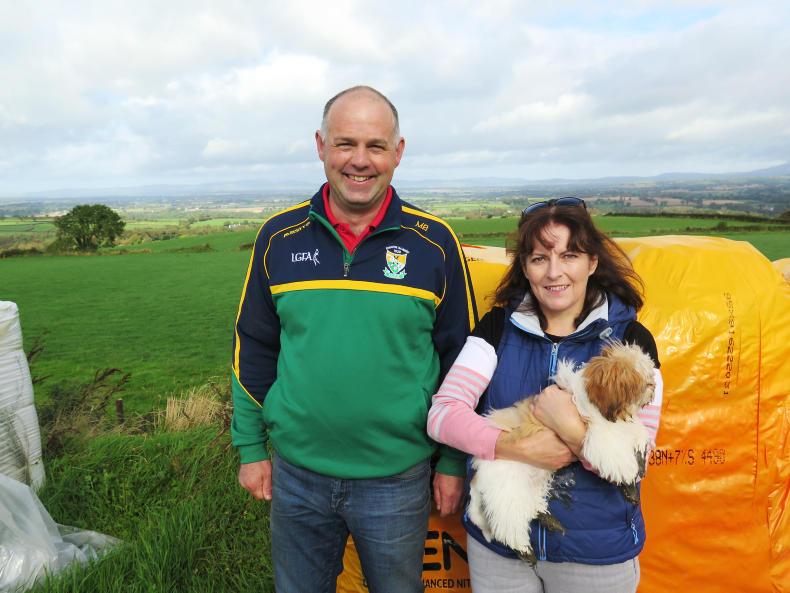
Mike and Tina Bermingham.
“April can be a very hard month here. I can pretty much guarantee that growth will be slow and grass will be tight from St Patrick’s Day to about 20 April.
“The average farm cover has gone as low as 375kg/ha in the past but not anymore. Now I won’t let it go below 500kg/ha. I want to keep the percentages up in the milk so we try to avoid feeding silage. The cows are usually on 5kg of meal up to the end of April and then we cut it back when growth picks up in late April and we close up ground for silage,” Mike says.
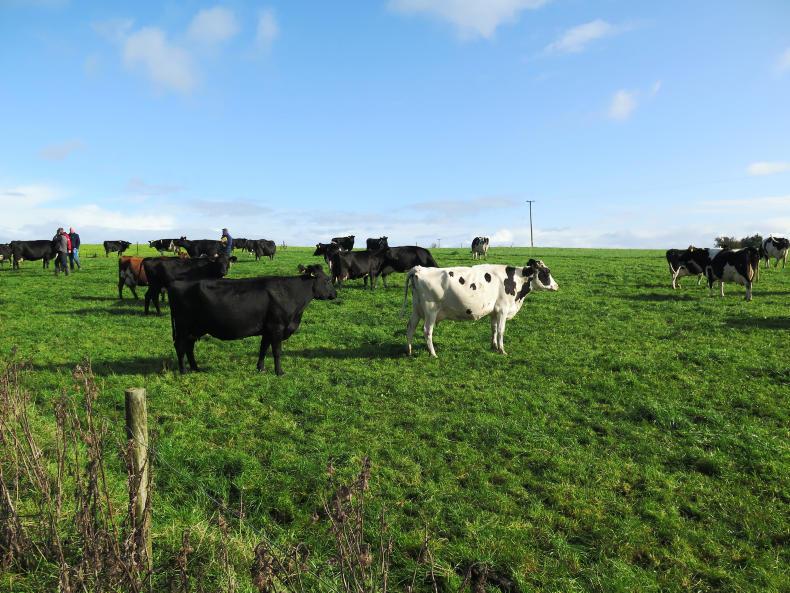
About half of the Bermingham's cows are Jersey crossbred. They are on track to produce 520kgMS/cow in 2019.
The Berminghams are milking 108 cows and all the replacement heifers are being contract-reared. There’s 47ha in the milking platform and no outside land which gives a milking platform stocking rate and an overall stocking rate of 2.3 cows/ha. Grass growth over the last three years has averaged 14.2t/ha. Mike’s aim is to run a self-contained unit that’s profitable and easy to manage.
There’s a high reliance on contractors and relief milkers, giving Mike and Tina time off to spend with their two girls, Sarah and Caley. Mike is adamant that he doesn’t want a complicated system. He focuses on cows and grass and if grass is scarce he feeds meal. He says that carrying more cows would add complications and cost and he doesn’t believe it would make him any more money or improve his lifestyle.

Judges John Maher, Teaagsc; Bryan Doocey, AIB; Mike Bermingham, farmer; David Cummins, Department of Agriculture and PJ O'Connor, Grassland Agro.
Cow performance is excellent. The herd is on track to produce around 520kgMS/cow from around 800kg of meal. This is 1,200kgMS/ha across all hectares.
Last year, the cows produced 570kgMS/cow from a much higher level of meal at 1.7t/cow due to the drought. Long term, Mike doesn’t want to feed any more than 700 to 800kg of meal per cow.
The six-week calving rate in 2019 was 92%. About half of the cows are Jersey crossbred the rest are Holstein Friesian. Average EBI is €154.
Mike planted 600m of new hedgerow in 2011 and has plans to plant another 600m this winter. He has also coppiced about 300m of hedgerow as part of GLAS.
Killashee, Longford
Longford was the next stop on the judging tour and to the farm of Mick and Mike Magan at Killashee. The Magans are milking 220 cows on a 52ha milking block, giving a stocking rate of 4.23 cows/ha on the milking platform. The overall stocking rate is 2.85 cows/ha. Huge development work has taken place on the farm over the last few years with extra land purchased, a new rotary parlour built and a new paddock layout.
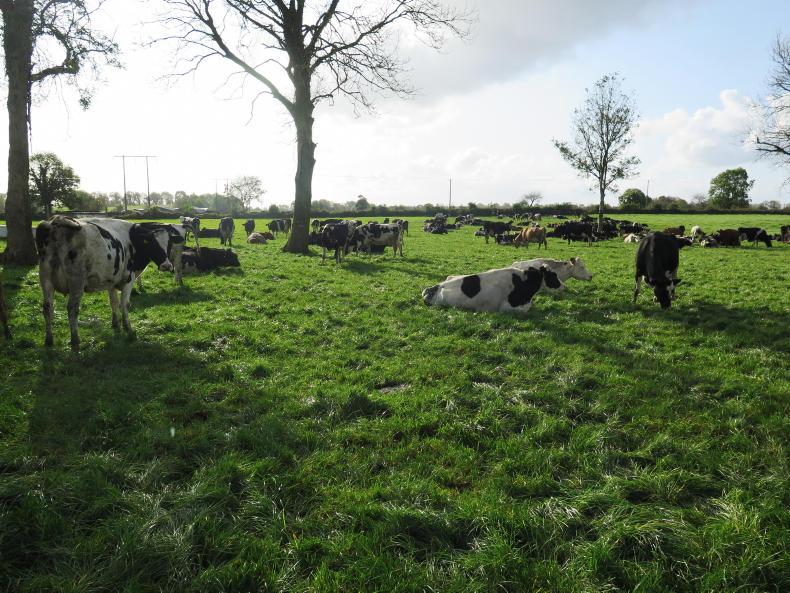
Mick Magan's cows are on track to produce 480kg MS/cow from around 900kg of meal per cow.
“Paddocks are designed for 36-hour grazings which works well. Because we have a high stocking rate, we need to go into higher covers of about 1,700kg/ha but quality is still good and the cows clean out the paddocks well so we don’t see it as an obstacle. We’re fortunate to be in an area that grows well. We’re 40m above sea level and we tend not to get too wet or too dry so the farm never shuts down,” Mick says.

There are over 400 trees and 5km of hedgerows on the Magan farm.
Average grass growth over the last three years is exceptionally high at 17.7t/ha. Ten of the 19 paddocks on the farm were skipped over for silage at various times last summer. One field is reseeded annually. The Magans are long-time members of the grass cultivar study which is looking at monocultures. Mike says the best time to reseed is on 1 June, as this allows the fastest turnaround time, being three weeks away from the longest day of the year.
Soil fertility is excellent, with nearly all of the farm on target for P, K and pH. Maize is sown on an outside block and this is fed in spring to stretch the round out.

The whiteboard map in the Magan farm office.
Mick reckons maize is better than grass silage in spring as it increases overall intake. Cows are coming in at night for silage and get grass during the day.
The milking platform is in three sections split by roads. Previously, Mick practiced day and night paddocks, so the cows would be near the yard for morning milking. Now cows graze paddocks out fully and then move on, which has improved clean-outs and prevented regrowths from getting grazed. The new milking parlour with shorter milking times has facilitated this.
Read more
Clonakilty clover research update
Dairy management: weather, condition scoring and clover
Over the last few weeks, the judges in the Grass10 Grassland Farmer of the Year competition have been hitting the roads and visiting farms around Ireland.
The competition is open to grassland farmers in all sectors, with specific category winners in dairy, beef and sheep, along with a young farmer category and a heavy soils category – recognising that land type is a major constraint to growing high quantities of grass.
Shortlist
The applications are whittled down by Teagasc personnel and a judging shortlist is created, well before any farm is visited.
This desktop exercise looks at grass growth, number of grazings per paddock, number of times the farm was measured and the average pre-grazing yield across multiple years.
This means that only the top farmers in each category are visited, so effectively they are winners already.
Questions
When the judges get on the farm, the farmer is questioned in more depth about his or her system, how they manage grass at various times of the year, their use of inputs such as meal and fertiliser, soil fertility, grazing infrastructure and their approach to managing biodiversity.
The judges will pick a category winner and an overall winner. Previous overall winners are Eddie O’Donnell from Tipperary in 2017 and John MacNamara from Limerick in 2018.
Fermoy, Co Cork
Mike and Tina Bermingham are in their sixth year of milking cows. Their north-facing farm outside Fermoy in Co Cork is overlooking the Blackwater Valley and some of the best land in the country. However, the Bermingham farm is high and exposed; it starts at 500ft above sea level and the top of the farm is at 600ft above sea level. Above that is forestry.

Mike and Tina Bermingham.
“April can be a very hard month here. I can pretty much guarantee that growth will be slow and grass will be tight from St Patrick’s Day to about 20 April.
“The average farm cover has gone as low as 375kg/ha in the past but not anymore. Now I won’t let it go below 500kg/ha. I want to keep the percentages up in the milk so we try to avoid feeding silage. The cows are usually on 5kg of meal up to the end of April and then we cut it back when growth picks up in late April and we close up ground for silage,” Mike says.

About half of the Bermingham's cows are Jersey crossbred. They are on track to produce 520kgMS/cow in 2019.
The Berminghams are milking 108 cows and all the replacement heifers are being contract-reared. There’s 47ha in the milking platform and no outside land which gives a milking platform stocking rate and an overall stocking rate of 2.3 cows/ha. Grass growth over the last three years has averaged 14.2t/ha. Mike’s aim is to run a self-contained unit that’s profitable and easy to manage.
There’s a high reliance on contractors and relief milkers, giving Mike and Tina time off to spend with their two girls, Sarah and Caley. Mike is adamant that he doesn’t want a complicated system. He focuses on cows and grass and if grass is scarce he feeds meal. He says that carrying more cows would add complications and cost and he doesn’t believe it would make him any more money or improve his lifestyle.

Judges John Maher, Teaagsc; Bryan Doocey, AIB; Mike Bermingham, farmer; David Cummins, Department of Agriculture and PJ O'Connor, Grassland Agro.
Cow performance is excellent. The herd is on track to produce around 520kgMS/cow from around 800kg of meal. This is 1,200kgMS/ha across all hectares.
Last year, the cows produced 570kgMS/cow from a much higher level of meal at 1.7t/cow due to the drought. Long term, Mike doesn’t want to feed any more than 700 to 800kg of meal per cow.
The six-week calving rate in 2019 was 92%. About half of the cows are Jersey crossbred the rest are Holstein Friesian. Average EBI is €154.
Mike planted 600m of new hedgerow in 2011 and has plans to plant another 600m this winter. He has also coppiced about 300m of hedgerow as part of GLAS.
Killashee, Longford
Longford was the next stop on the judging tour and to the farm of Mick and Mike Magan at Killashee. The Magans are milking 220 cows on a 52ha milking block, giving a stocking rate of 4.23 cows/ha on the milking platform. The overall stocking rate is 2.85 cows/ha. Huge development work has taken place on the farm over the last few years with extra land purchased, a new rotary parlour built and a new paddock layout.

Mick Magan's cows are on track to produce 480kg MS/cow from around 900kg of meal per cow.
“Paddocks are designed for 36-hour grazings which works well. Because we have a high stocking rate, we need to go into higher covers of about 1,700kg/ha but quality is still good and the cows clean out the paddocks well so we don’t see it as an obstacle. We’re fortunate to be in an area that grows well. We’re 40m above sea level and we tend not to get too wet or too dry so the farm never shuts down,” Mick says.

There are over 400 trees and 5km of hedgerows on the Magan farm.
Average grass growth over the last three years is exceptionally high at 17.7t/ha. Ten of the 19 paddocks on the farm were skipped over for silage at various times last summer. One field is reseeded annually. The Magans are long-time members of the grass cultivar study which is looking at monocultures. Mike says the best time to reseed is on 1 June, as this allows the fastest turnaround time, being three weeks away from the longest day of the year.
Soil fertility is excellent, with nearly all of the farm on target for P, K and pH. Maize is sown on an outside block and this is fed in spring to stretch the round out.

The whiteboard map in the Magan farm office.
Mick reckons maize is better than grass silage in spring as it increases overall intake. Cows are coming in at night for silage and get grass during the day.
The milking platform is in three sections split by roads. Previously, Mick practiced day and night paddocks, so the cows would be near the yard for morning milking. Now cows graze paddocks out fully and then move on, which has improved clean-outs and prevented regrowths from getting grazed. The new milking parlour with shorter milking times has facilitated this.
Read more
Clonakilty clover research update
Dairy management: weather, condition scoring and clover
















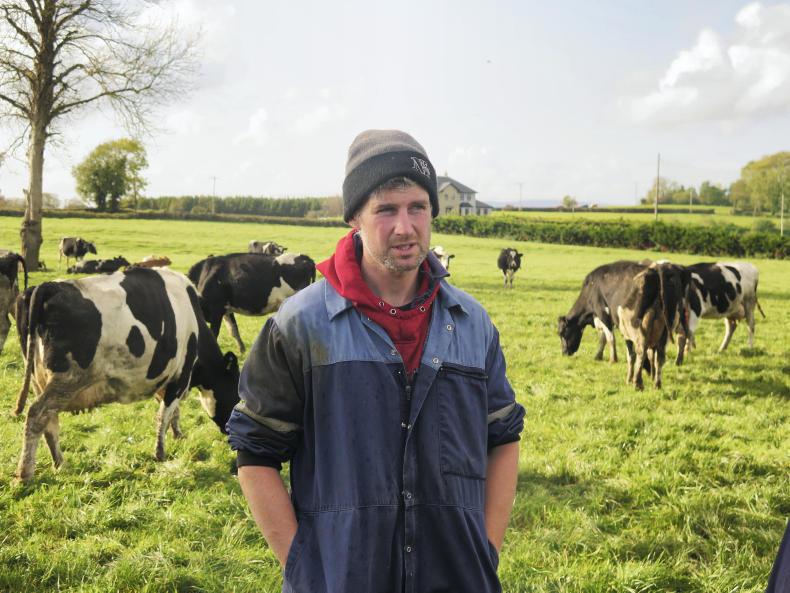
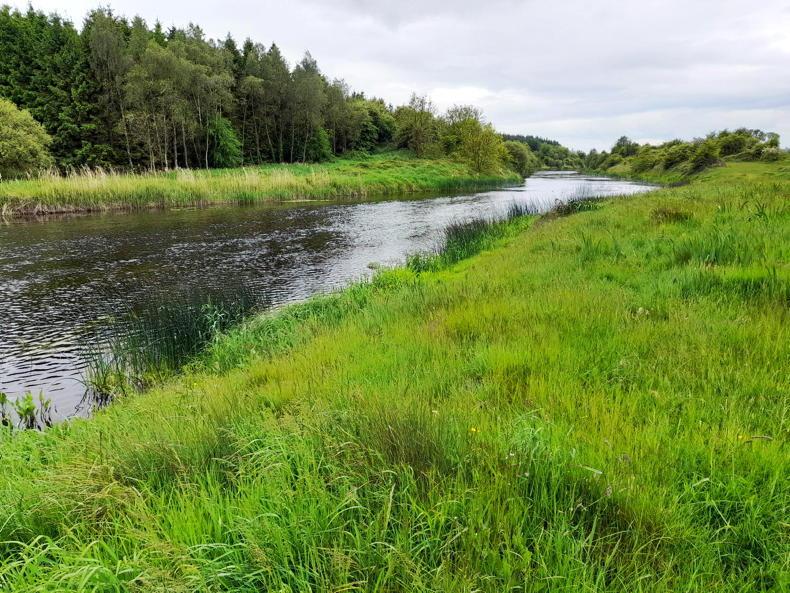

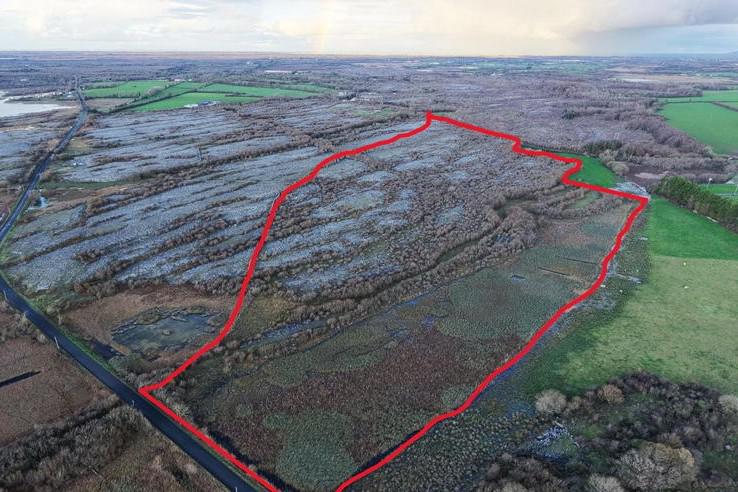

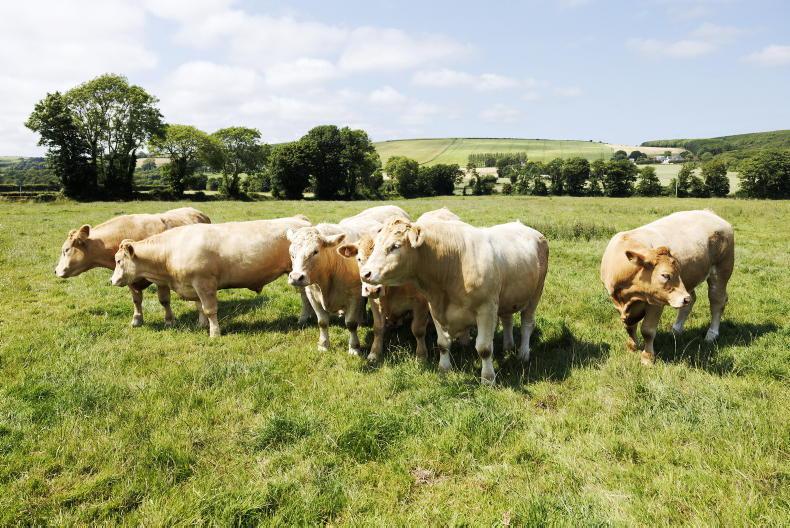
SHARING OPTIONS